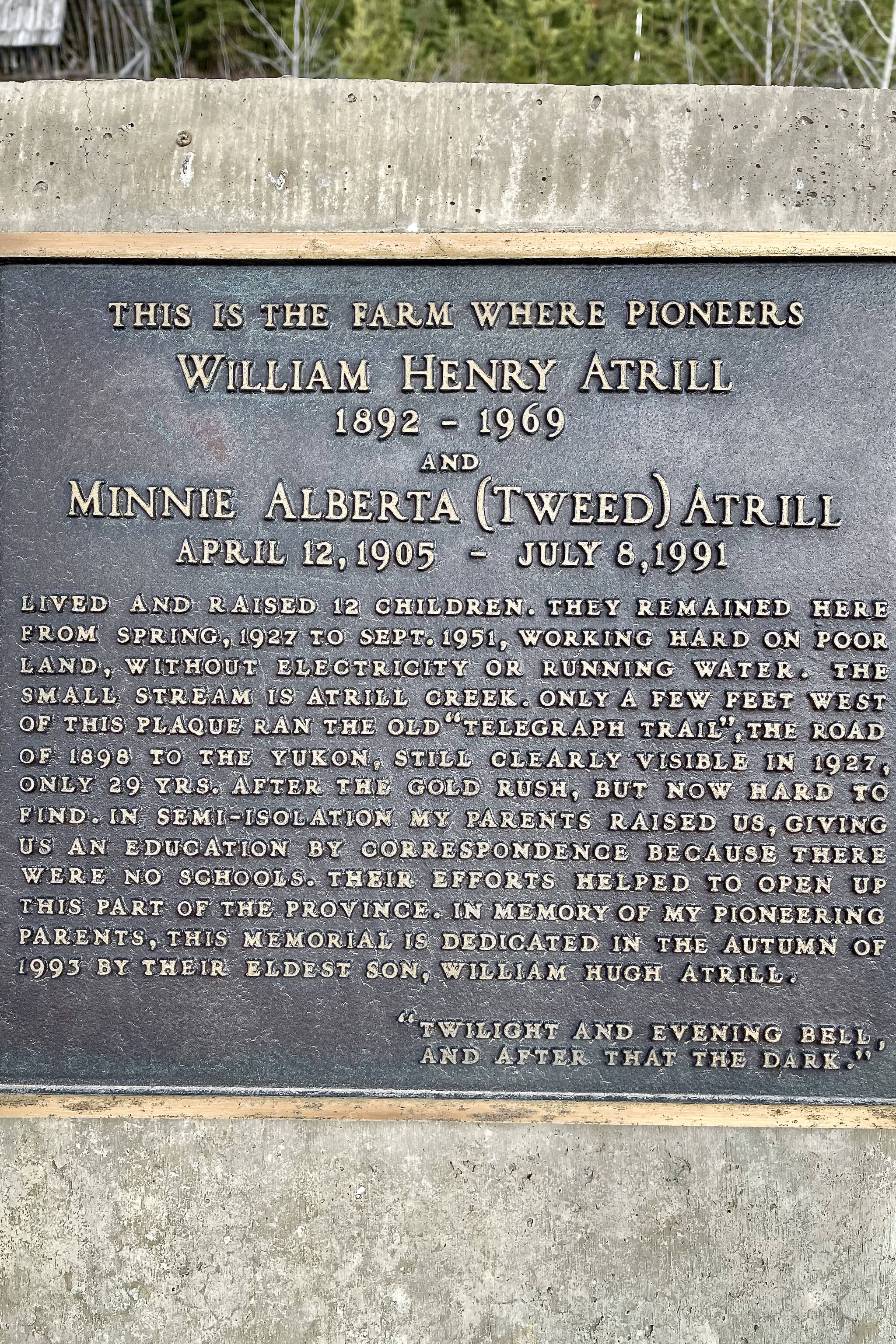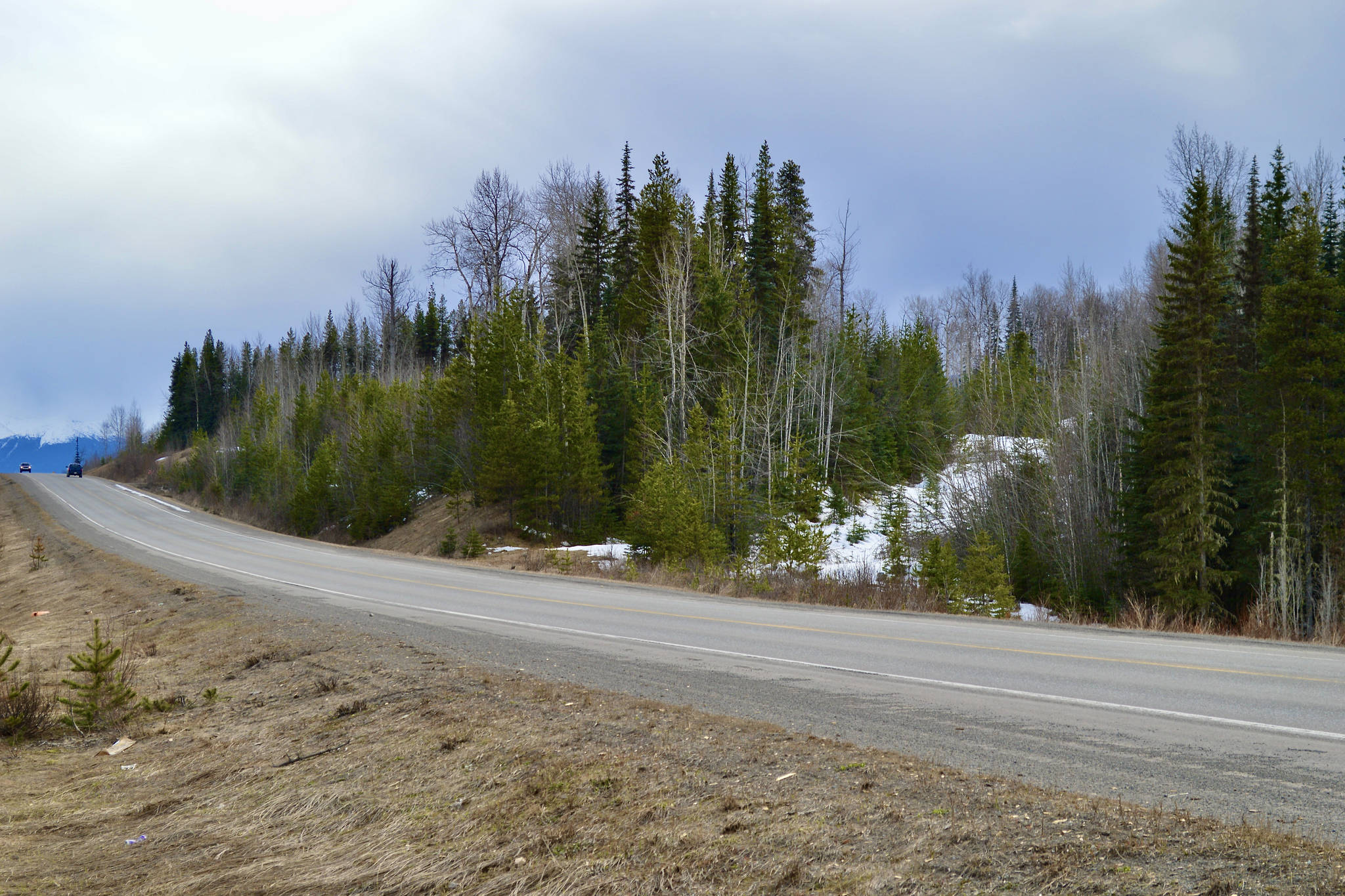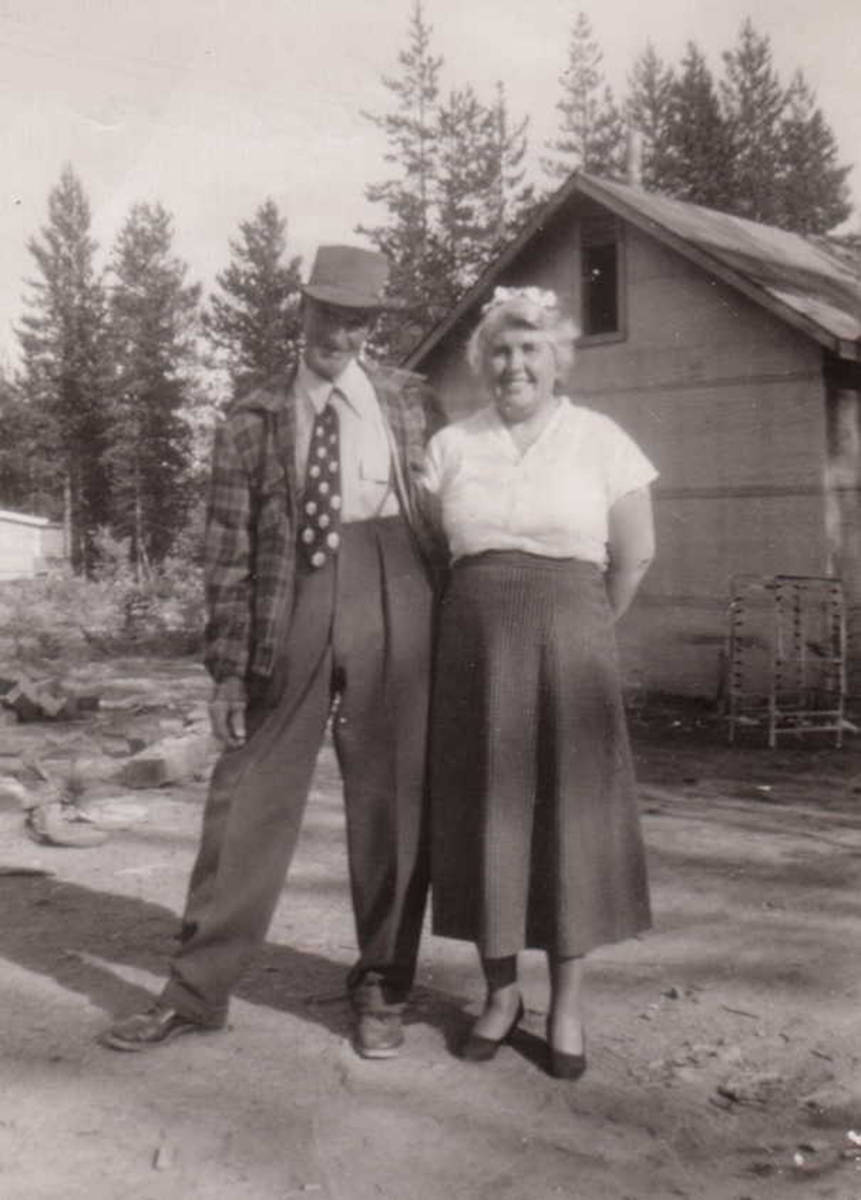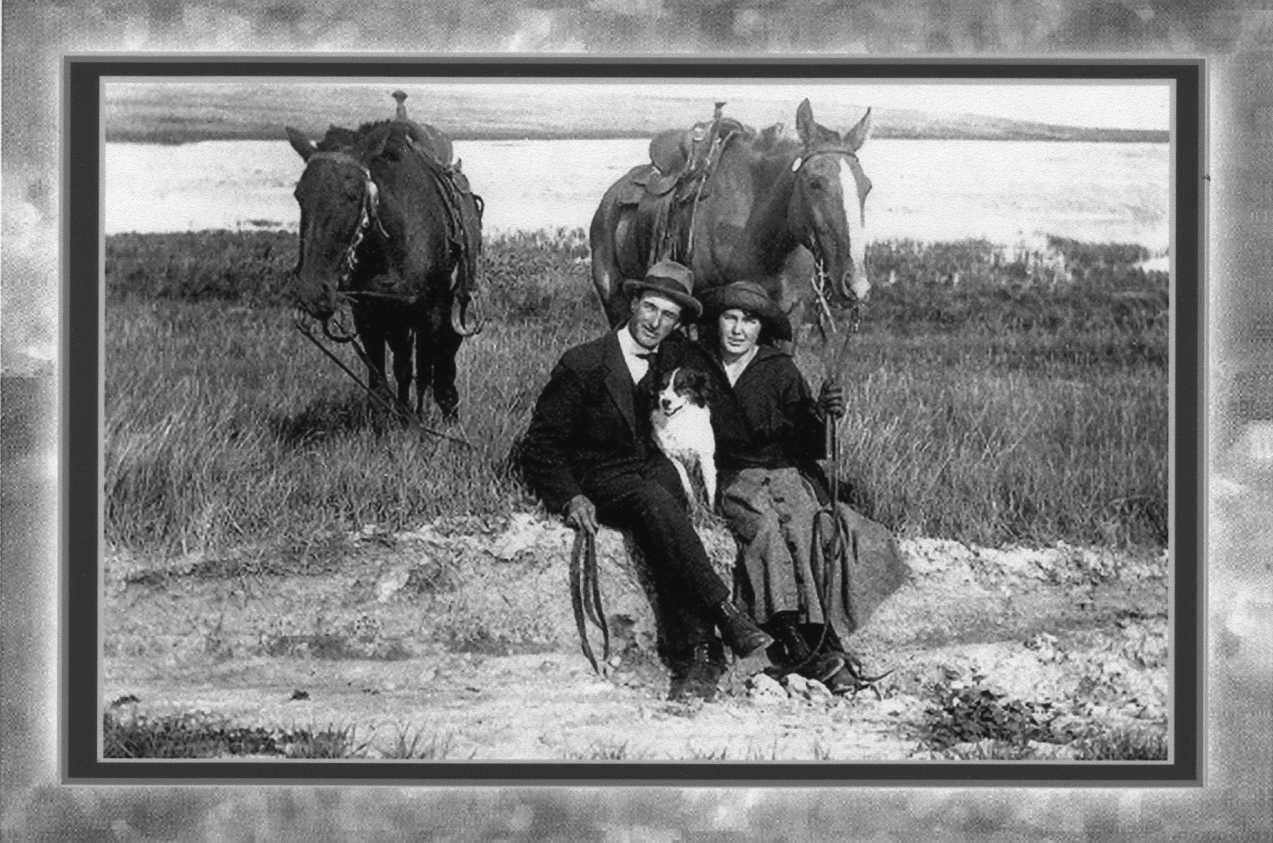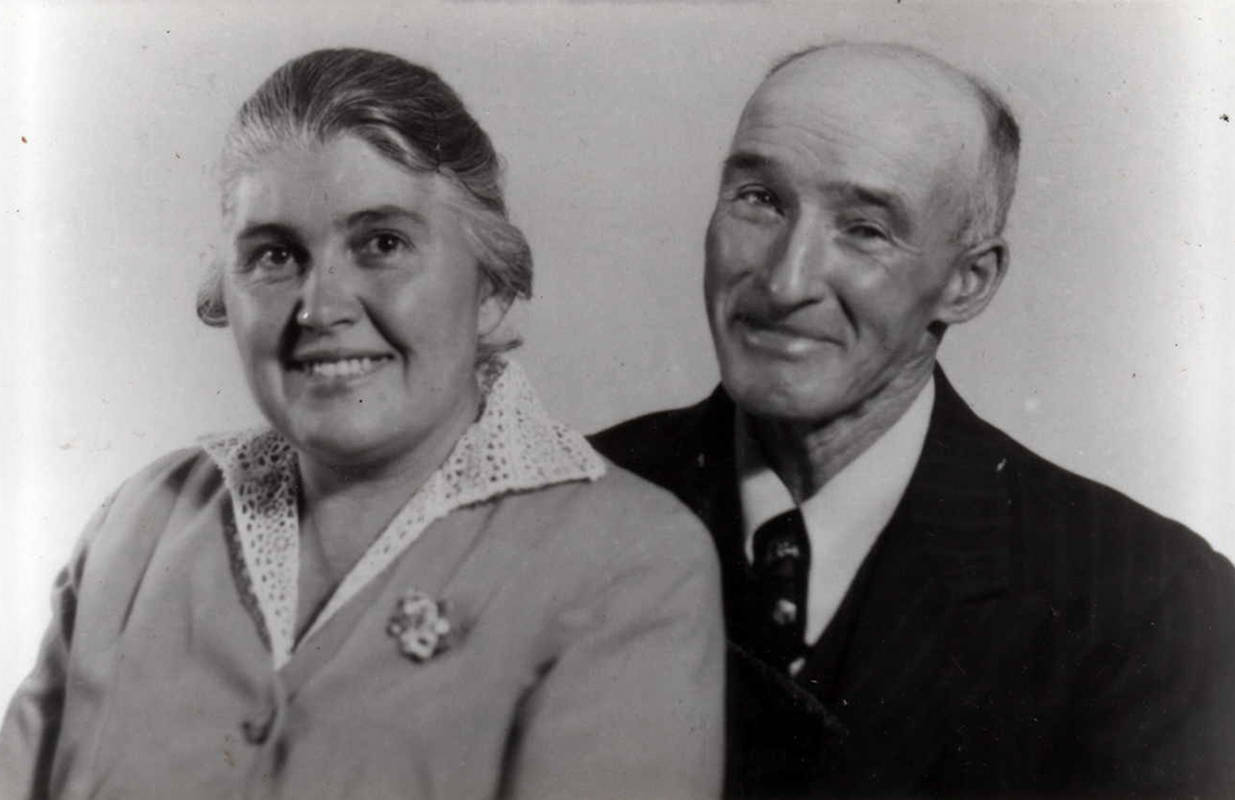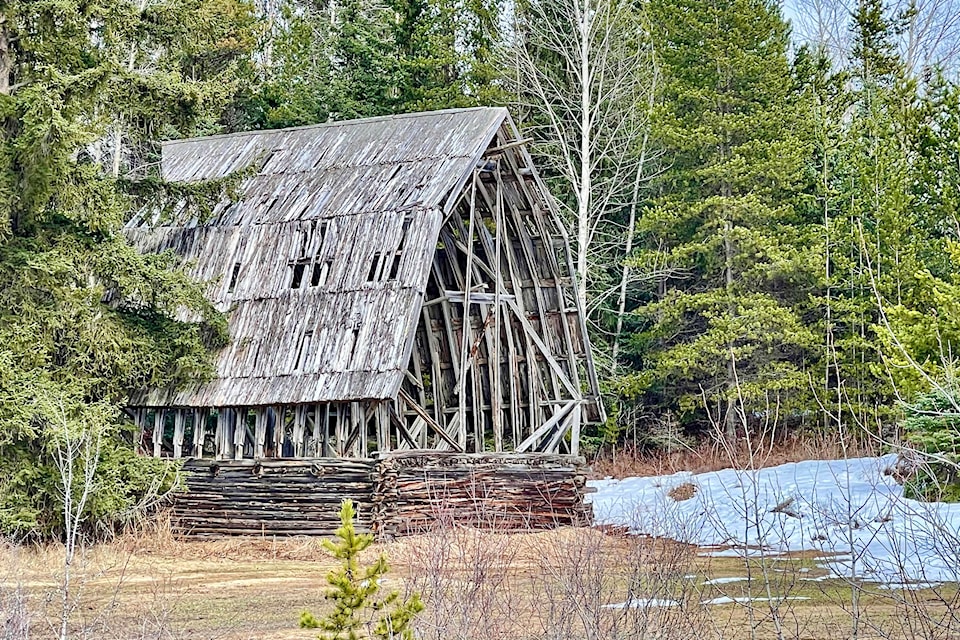I received a delightful letter from a former resident of the valley, Muriel (Atrill) Scallon from Ashcroft, B.C. answering my request for information about pioneer families.
The story she had to tell, added to the information I found researching, is a fascinating tale of a true pioneer family of the Bulkley Valley. Here, with my gratitude, is their story.
The story begins when Minnie Tweed met and married William Atrill June 22, 1922. They spent their honeymoon riding two horses from Oyen, Alberta to Pine Creek, Manitoba and settled for a time in Tyndall, Manitoba.
In 1927, they took the train to Seaton, B.C., just west of Witset, a whistle-stop on the Grand Trunk Pacific Railway where they settled on 160 acres of Crown land with their first two children Hugh and Marjorie.
“The area would be called Atrill creek for the little creek that ran through the land,” recalled Muriel, a daughter of Minnie and William.
They cleared raw land and had a market garden, over 200 hens for eggs and meat, and cattle for milk and beef.
“We put up hay in the fall to help us feed the cattle and horses throughout the winter, and all of the children (12 by 1943) helped in the storage of the hay, veggies and anything else we needed during the winter months,” Murial said.
All of the children were taught by Minnie at home through B.C. Correspondence School.
There was no electric power, so they washed clothes with a hand washing machine and water brought up in buckets from the creek, 1,000 feet from the house. The soap was homemade lye made from ashes and animal fat.
“My mother was a very good seamstress,” said Muriel, making all of the childrens clothes on her sewing machine using blue denim for pants and dyed flour sacks for shirts.
The first telephone was brought into the area by the B.C. Government Telegraph around 1938. It was a public phone located at the Atrill’s, who had to collect tolls from neighbours and even strangers who would come in to use it on ocassion.
The Atrills were even mentioned in The Interior News in July 1963 thanking the family at Atrill creek for having one of the few “crude telephone services,” that was so important, during the war years especially, and thanking the family for the amazing lengths they would go to deliver a telegram or phone message.
There were very few phones, usually only one in a surrounding settlement like Atrill Creek, Evelyn, Glentanna, Telkwa and Houston.
Once a month William would walk 26 miles to Smithers to buy some basic groceries, but in 1942 the family got its first motor vehicle when son Hugh bought a 1927 Model T Ford.
During the “Hungry 30s” the Atrill farm was a haven for people travelling, and many times Minnie would have two or three extra people for lunch.
Son Len Atrill said his mother would never turn away a hungry person.
“Sometimes people would stay overnight on a sofa, or spend the night in the hay loft,” he added. “The main road ran by our place; it was just two wheel tracks with weeds growing in the middle.”
That was the beginnings of what we now know as highway 16.
Both Muriel and Len would reminisce that their mother was a very good piano player and the family spent many cold nights by her prized piano singing old-time gospel and favourite tunes. Later on ,some of the children learned other instruments and would join in as well.
One year in October, a hitchhiker came through the Smithers area and ended up overnighting at the Atrills. He later wrote an article in the 1947 issue of The Alaskan Sportsman, describing his experience:
“Southern hospitality was put to shame that morning in Canada. We were invited into the house for more fresh milk before we started while two of the Atrill’s boys cranked up the Ford to take us to the next settlement (Hazelton).
“This meant a return trip for them, 44 miles in all. Our protests we overruled when Mr. Atrill explained that it was only the second time our young driver had been there, though it was only 22 miles away. He was of high school age.
“We had to admire the Atrills. Real pioneers. They had come there 20 years ago to carve a farm out of the wilderness. They had reared 12 children and educated them at home. The schools were too far away. It was a genuine pleasure to meet such a group of kids, all shy but quite friendly.”
Muriel recalls life as being very busy, with many hands to help and much to do on the farm to keep it all going.
“We had no electric, no oil, no gas, water was packed from the creek, and all the work was done by two horses with old fashioned plows, cultivators and back bones.”
“All of us (children) thank our mother and father for giving us a very good start in life,” Muriel said.
In 1951, William and Minnie moved to Terrace, after some of the children had left home. William passed away in 1969, and Minnie later remarried and divorced.
Minnie finally relocated to Ashcroft in 1978, closer to where some of her children lived.
“After the harsh climate of northern B.C., she just loved Ashcroft,” Len said.
“She always had a garden and fruit trees and taught piano lessons.”
He said she even took the initiative to collect donations for an organ to donate to a local seniors complex.
Minnie passed away in July of 1991 having lived a full life.
Of William and Minnie’s children; Hazel, Muriel and Myrtle are still living, as well as many grandchildren and great grandchildren.
Locally, Smithers Mayor Gladys Atrill is their granddaughter by one of their sons, Tom, who made his home in the Suskwa and Smithers areas throughout his life.
The homestead is still visible. On Highway 16 just three kilometres past Witset where Bernie’s Custom Auto was, there is a dedication plaque to the pioneer family that helped settle the area. The barn still stands where the boys built it and a keen eye can also catch a glimpse of the old trail to Smithers look back up the hill (Atrill Hill) to the right of the plaque.
My deepest thanks to Muriel Scallon for sending me the letter and sharing with all of us a glimpse of a pioneer past.
